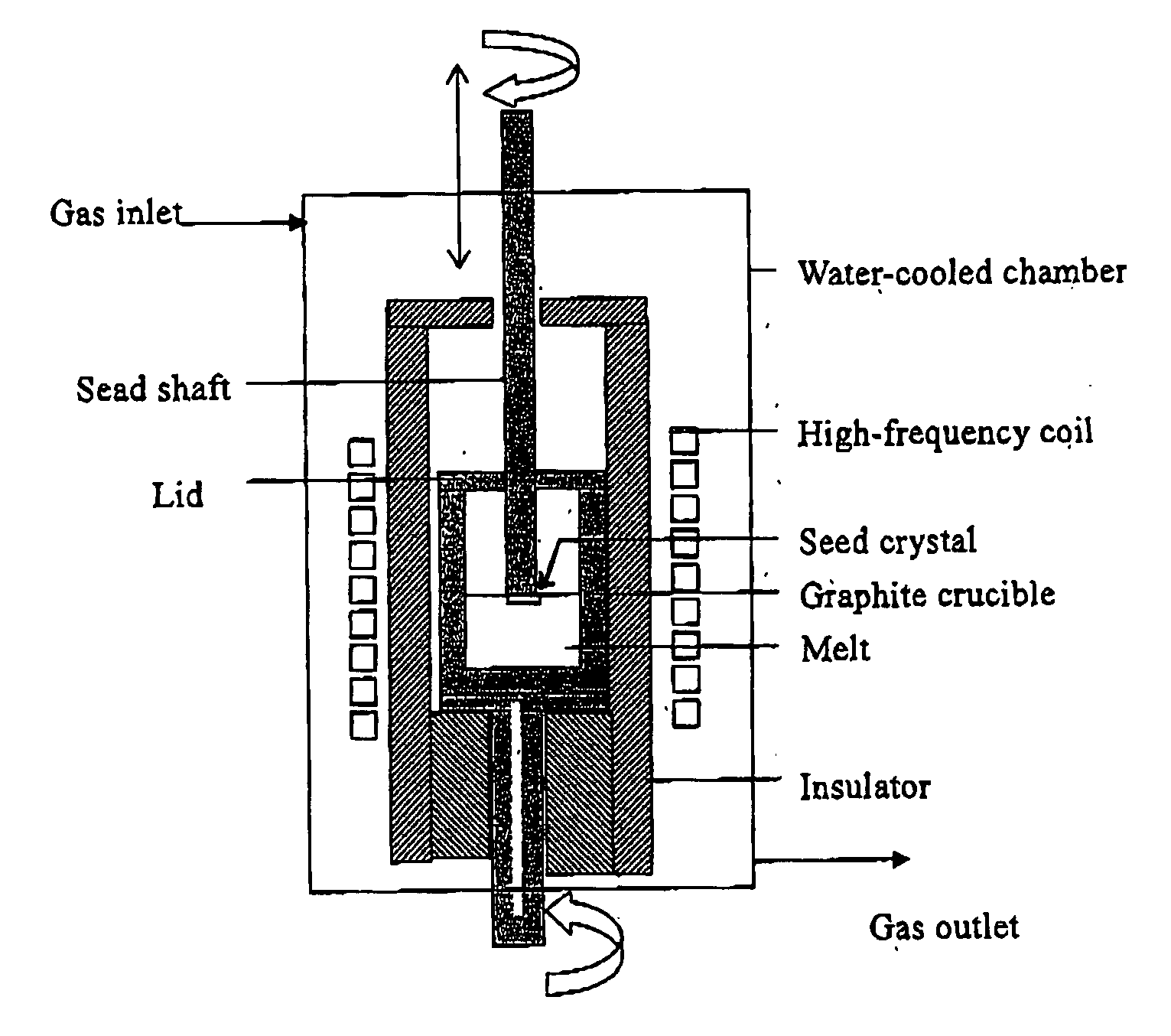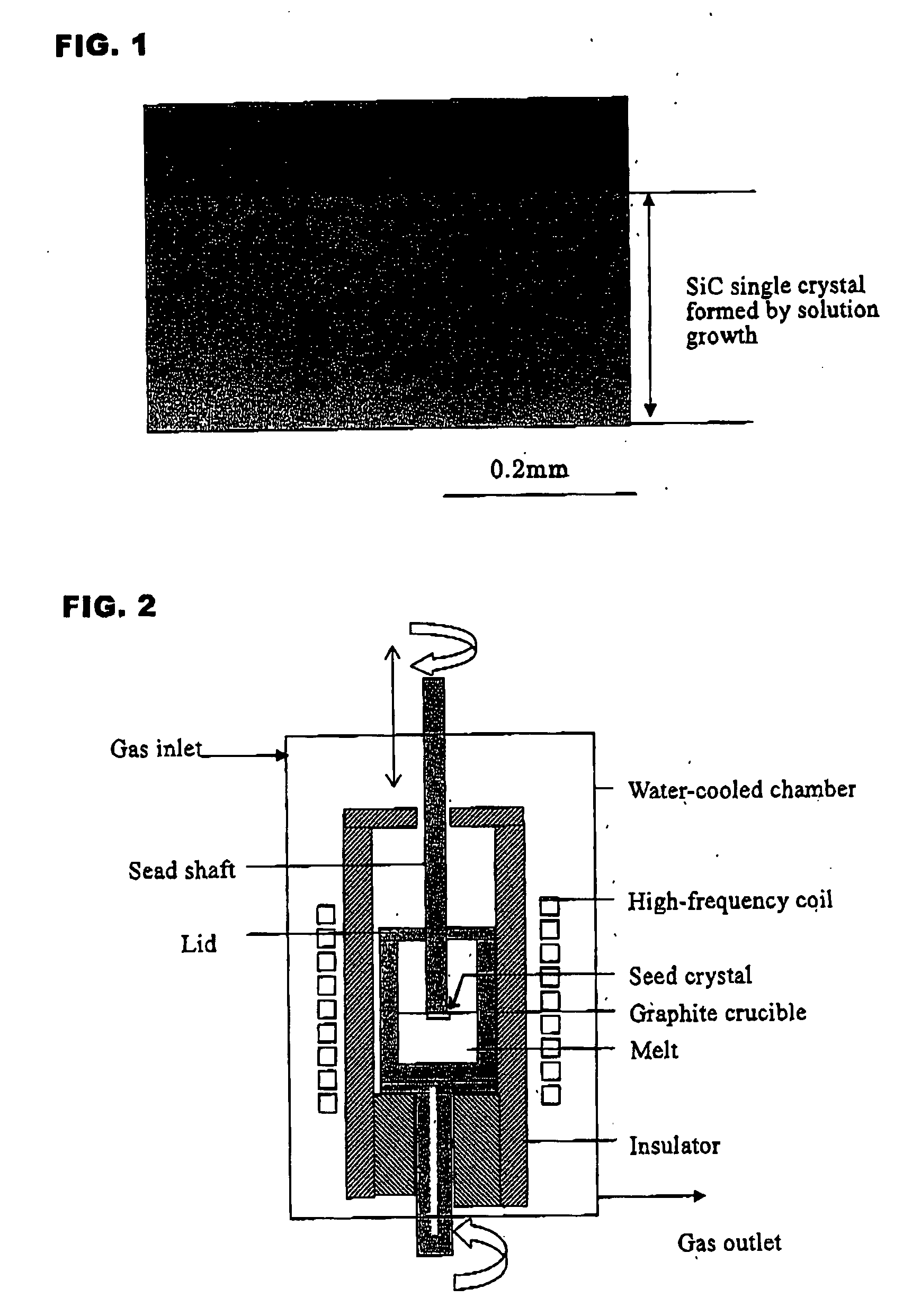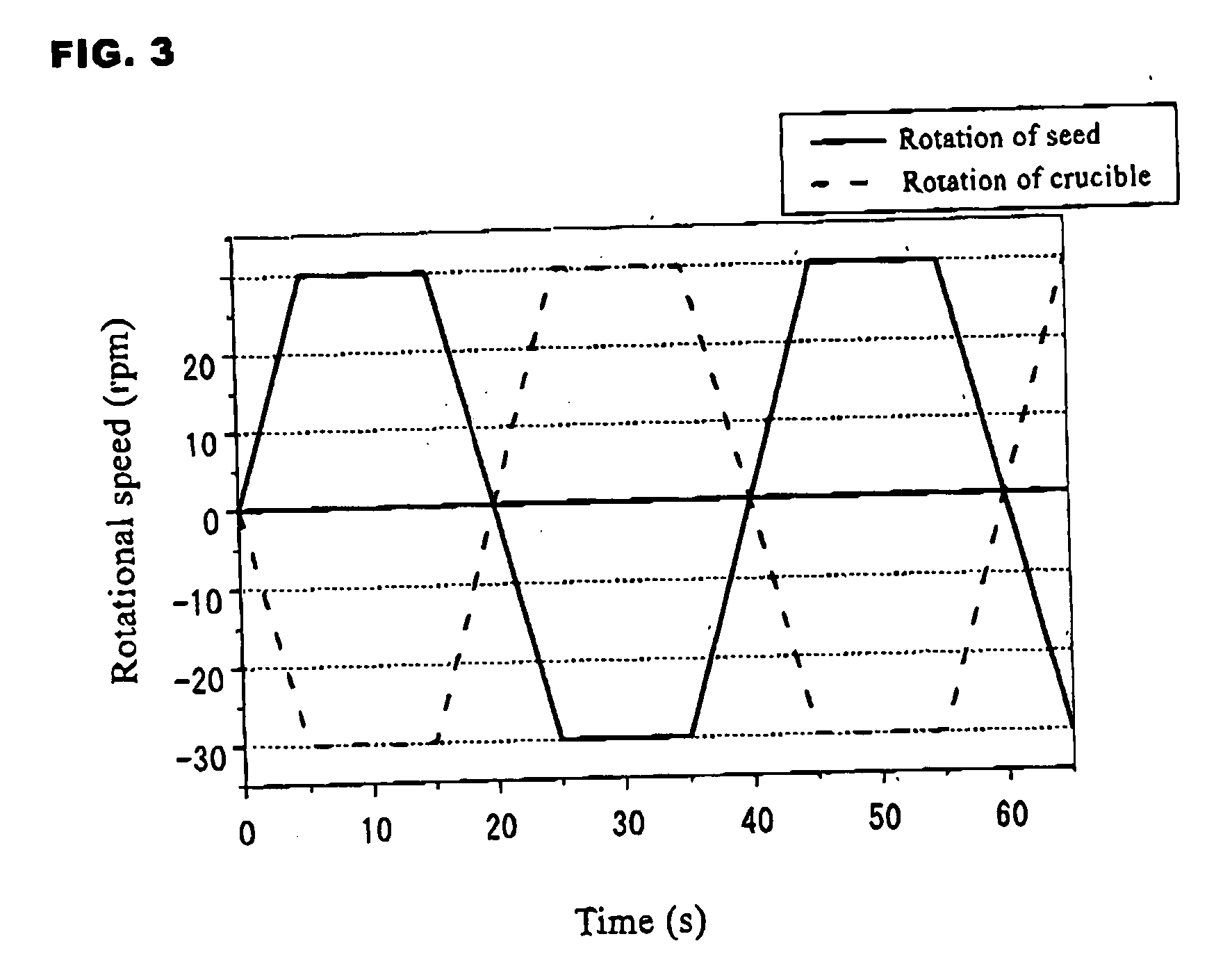Method for preparing silicon carbide single crystal
a silicon carbide and single crystal technology, applied in the direction of crystal growth process, polycrystalline material growth, protective fluid, etc., to achieve good quality, high speed, and good quality
- Summary
- Abstract
- Description
- Claims
- Application Information
AI Technical Summary
Benefits of technology
Problems solved by technology
Method used
Image
Examples
example 1
[0128] This example illustrates application of ACRT in which only a graphite crucible is rotated in back and forth.
[0129] A graphite crucible was charged with Si and Ti as an alloy raw material (for forming a solvent for SiC) in proportions corresponding to a composition of Si0.80Ti0.20 ([M] / ([M]+[Si])=0.20), and after the atmosphere inside the apparatus was replaced with argon gas, the raw material was heated to melt. Heating of the melt was adjusted such that the temperature in the vicinity of the level of the melt which became a crystal growth interface was approximately 1700° C. and the temperature at the bottom of the melt was approximately 1750° C. The crucible was rotated from the start of heating. Heating of the melt was continued for two hours so that a sufficient amount of carbon was dissolved from the crucible into the melt to achieve a saturated SiC concentration, and then a SiC seed crystal attached to a seed shaft was immersed just below the level of the melt.
[0130] ...
example 2
[0132] This example illustrates growth of a SiC single crystal by ACRT in which a graphite crucible and a seed crystal (seed shaft) are rotated with back-and-forth rotation in such a manner that they have the same rotational direction.
[0133] The seed crystal and the crucible were first both rotated to the left. The final rotational speed of the seed crystal and the crucible was set at 30 rpm, and the time until the set rotational speed was reached was 5 seconds. After the final rotational speed was reached, rotation was carried out at this rotational speed for 10 seconds, and then rotation was stopped in 5 seconds. Next, the rotational direction of the seed crystal and the crucible was changed to the right, and in the same manner as described above, it reached 30 rpm in 5 seconds, and after rotation was maintained at 30 rpm for 10 seconds, rotation was stopped in 5 seconds. The above procedure was made one cycle (cycle time of 40 seconds), and this cycle was repeated during crystal...
example 3
[0135] This example illustrates growth of a SiC single crystal by ACRT in which a graphite crucible and a seed crystal (seed shaft) are rotated with back-and-forth rotation in such a manner that their rotational directions are opposite from each other.
[0136] Thus, the seed crystal was first rotated to the right, while the crucible was rotated to the left. The final rotational speed for each was set at 30 rpm, and the time to reach the set rotational speed was 5 seconds. After the set rotational speed was reached, rotation was continued at that rotational speed for 10 seconds, and then rotation was stopped in 5 seconds. Next, the rotational directions were reversed such that the seed shaft was rotated to the left and the crucible was rotated to the right. In the same manner as described above, after 30 rpm was reached in 5 seconds, rotation was continued at 30 rpm for 10 seconds, and then rotation was stopped in 5 seconds. The above procedure was made one cycle, and this cycle was r...
PUM
 Login to View More
Login to View More Abstract
Description
Claims
Application Information
 Login to View More
Login to View More - R&D
- Intellectual Property
- Life Sciences
- Materials
- Tech Scout
- Unparalleled Data Quality
- Higher Quality Content
- 60% Fewer Hallucinations
Browse by: Latest US Patents, China's latest patents, Technical Efficacy Thesaurus, Application Domain, Technology Topic, Popular Technical Reports.
© 2025 PatSnap. All rights reserved.Legal|Privacy policy|Modern Slavery Act Transparency Statement|Sitemap|About US| Contact US: help@patsnap.com



